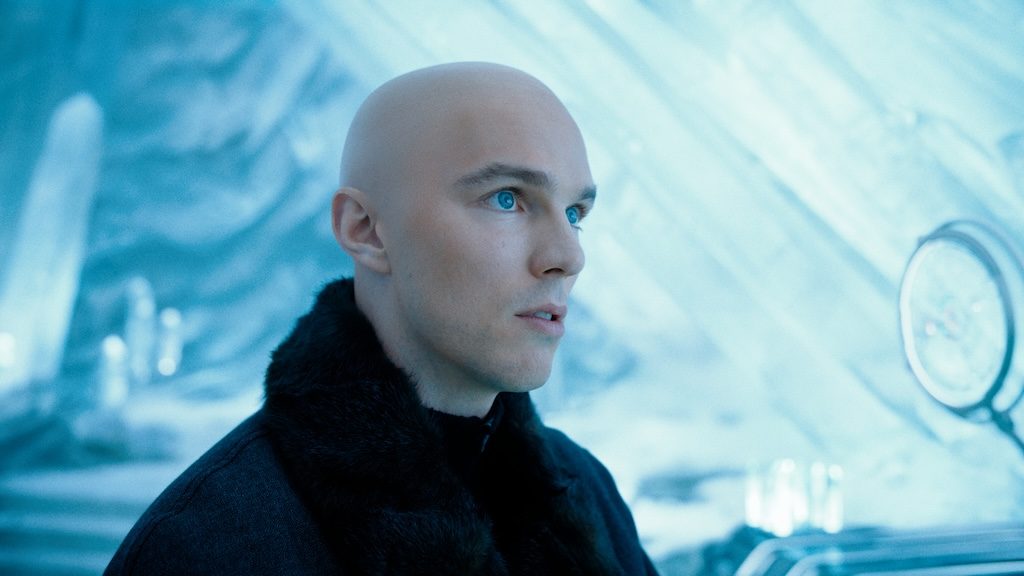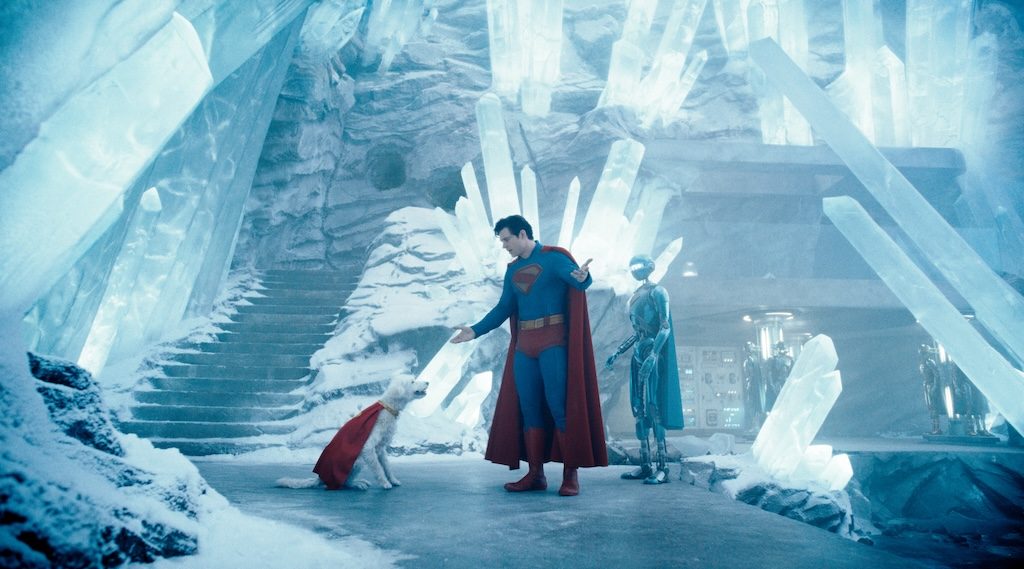Superman: James Gunn’s Writing Process Explained

Best known for his reinvention of Guardians of the Galaxy and The Suicide Squad, Gunn now finds himself at the helm of DC’s newest cinematic chapter—a fresh take on Superman. His process on how he writes superhero scripts forges a bridge between structure and spontaneity, speech and silence, myth and humanity, goofiness and seriousness.
James Gunn’s writing process is dynamic and deliberately flexible, designed to keep his creative juices flowing and stave off a condition worse than writers’ block – boredom.
He avoids falling into writing routines by regularly changing his screenwriting approach: sometimes starting by immediately writing scenes, letting character-driven moments flow organically, and other times laboriously developing detailed treatments and outlines. He admits to sometimes “treatmenting something to death,” but believes the best results come from a “treatment with freedom” that balances structure, narrative flow and spontaneity.
I completely relate to Superman because he’s everything I am … he’s somebody who is an outsider who feels like an alien, but also the ultimate insider, because he’s Superman.
Screenwriting James Gunn Style
James Gunn’s screenwriting process is distinguished by several unique elements that consistently shape his stories:
- Injecting Himself into the Script: He emphasizes putting his own distinct sensibilities and personal style—his “weirdness,” humor, and heart—into each script. Gunn learned not to dilute his voice, but to amplify it.
- Controlled Use of Improvisation: While he rehearses and allows for some discovery with actors in rehearsal, Gunn believes improvisation on set is overrated. He insists on a tight, well-crafted script before production starts, to ensures story integrity.
- Visual Planning and Color Story: He thinks visually as he writes, planning the “color story” of his films and using color swatches for each scene to match emotional and visual arc.
- Focus on the Third Act: Gunn advises writers (especially for action or spectacle films) to write a memorable climax so the third act is fast-paced, energetic, and impactful.
- Scientific Accuracy: He combines wild imagination with a “doctor-like” approach to seeing what works mechanically in a script, treating each scene as part of a machine designed to affect the audience in specific ways.
- Kill Your Darlings: Gunn uses invites iterative feedback and shares early drafts with trusted colloborators. He’s prepared to cut quality pages to ensure narrative flow and conciseness.
- Tone & Texture: Hopeful Yet Grounded. Gunn balances fantasy and realism, opening with Krypto rescuing Superman in the snow to establish the tone early. He emphasized a grounded, character‑driven tone—combining seriousness, hope, humor, and warmth—without tipping into outright comedy.

James Gunn
Gunn stresses finishing scripts (resisting the urge to abandon work-in-progress too soon), learning all aspects of filmmaking, and trusting one’s story instincts while refining the technical aspects of writing.
Building A Skeleton For Superman
For major projects, especially DC films, Gunn is known for creating highly detailed treatments, sometimes up to 70 pages long, which might include photographs and supplementary materials for inspiration and clarity. He likens this phase to building a skeleton for the story—a strong foundation to avoid mistakes later in the scriptwriting process. The overarching story, tone, and character arcs are clearly established before he types: FADE IN. He won’t shoot before the script is tight and locked down.
When preparing to write Superman and other DC movies, Gunn drew deeply from his personal comic book history. He was determined to capture the sense of wonder, adventure, and comic-book energy that influenced him as a child, rather than just continuing tradition or defaulting to an origin story. Gunn wants to reflect the familiar “fun and community” from the comics he grew up on: a world where Superman had superhero friends, wild technology, and extraordinary adventures—not just an isolated, brooding hero contemplating the vagaries of life while saving humanity.
I was seeing a world where Superman had superhero friends and he had a Superman family. There were robots and giant monsters and he had a flying dog and technology so extreme, it seemed like sorcery.
He studied the main Superman comics, particularly those that balanced awe with heart, including All-Star Superman. He paid close attention to the mythic, imaginative, and optimistic aspects that made those stories fun and enduring. Gunn considers All‑Star Superman essential inspiration for tone of Superman, blending mythic scale with emotional realism.
Gunn advises writers to consider genre blending—taking incompatible influences and colliding them to create new, surprising story opportunities. Despite the sometimes hapahzard nature of his scripts, James Gunn’s writing process for the new Superman movie was deep, thoughtful, and deliberate.

Lois Lane (Rachel Brosnahan), Jimmy Olsen (Skylar Gisondo), Clark Kent (David Corenswet) Photo courtesy of Warner Bros. Pictures
World-building
James Gunn’s childhood comics taught him, and in turn can teach writers, several crucial lessons about world-building:
- Balance the familiar and the fantastical: Gunn was inspired by comic book worlds that felt “wondrous yet lived-in.” Effective world-building blends recognizable elements (like social dynamics, moral questions, or urban settings) with imaginative twists (such as superpowers, advanced technology, or talking animals). This keeps universes “relatable and captivating” at the same time.
- History and culture underpin everything: The worlds Gunn admires aren’t placeholders, but places with “visible histories, cultures, and social norms,” just like the real world. Authenticity comes from understanding how a world’s history, geography, and belief systems influence everything—from language to politics to the daily lives of characters. Even if you don’t show every detail, “knowing them as the writer deepens immersion.”
- The universe exists beyond the story’s window: Comics Gunn loved hinted at “endless stories, characters, and mysteries just out of frame.” Writers should craft worlds that feel bigger than any single plotline, with opportunities for exploration and implications that extend beyond the “window” of the main narrative.
- Let setting shape character and plot: Iconic comic characters are products of their worlds—their values, abilities, and conflicts emerge organically from the environments and communities they inhabit. Make sure your world influences and is influenced by the characters, shapes story events and personal arcs.
- Weave the extraordinary into the everyday: Gunn’s comics made the incredible feel natural by normalizing the extraordinary within daily life—super-powered pets, alien gadgets, and epic friendships co-existed with ordinary problems and humor. Don’t isolate fantastic elements; layer them into the world’s logic and routines so audiences accept and enjoy them as part of “normal” reality.
- Imply depth—don’t dump details: The most effective worlds offer “hints and glimpses” of wider lore, sparking curiosity rather than overwhelming readers with exhaustive exposition. Focus on details relevant to the story, but allow hints of greater complexity lend a sense of endless possibilities.
We all want to be Superman… And I think that by the end of the movie, we realize that Superman wants to be us. He wants to be a human being. That is his biggest desire.

Lex Luthor (Nicholas Hoult) Photo courtesy of Warner Bros. Pictures
Creating The Superman Structure
Superman hinges on the juxtaposition of two identities – Clark Kent and Superman.
Gunn built the script around Clark’s humanity. He likens Superman to “the greatest outsider and the greatest insider,” reflecting both his own feelings of being an outsider and his role at the helm of DC Studios.
His goal wasn’t to rehash the origin story, but to explore “What’s it like to be Superman in our world today?”
Inspired heavily by Grant Morrison’s All‑Star Superman, Gunn focused on making Superman “larger‑than‑life and fantastical, but also incredibly realistic.”
Structure & Pacing: Start in Media Res
From the very first draft, the film opens with Superman already established—three years into his career—dropping straight into action and avoiding the origin story bar an sweeping text introduction.
Gunn used a thematic “Rule of Three: three centuries of metahumans, three years since Superman revealed himself, and three minutes since his last defeat” to orient audiences right away. He focuses on the character and the world around him.
Character-Driven Storytelling
The film emphasizes Superman’s flaws and his learning process as a superhero. Gunn portrays him as a character who is still figuring out his role and responsibilities while grappling with the potential knowledge that his parents sent him to Earth with an ulterior mission.

Superman (David Corenswet) Photo courtesy of Warner Bros. Pictures
Political and Social Commentary
Gunn integrates contemporary political themes into the narrative. The film addresses issues such as media manipulation, propaganda, and the influence of billionaires, drawing parallels to current global events. For instance, Lex Luthor’s character embodies the archetype of a billionaire using fear and disinformation to gain power, reflecting real-world dynamics.
Ensemble Cast
The film features a diverse cast of characters, including other metahumans like Green Lantern and Hawkgirl. This ensemble approach not only provides comic relief, but also depicts a community of heroes, demonstrating that Superman is part of a larger DC universe. Not to mention Supergirl’s unexpected and disshevelled entrance at the end.
Balancing Humor and Heart
Gunn is known for his ability to blend humor with emotional depth. In Superman, he maintains this balance, ensuring that while the film tackles serious themes, it also offers numeroud moments of levity and warmth, especially when he’s with Lois.
Personal Reflection and Experience
Gunn’s own experiences with public scrutiny and online public backlash inform his storytelling.
James Gunn grappled with the best approach to Superman for over a decade. The opening scene was one of the most challenging to write. Then he looked to his own adopted dog who was as playful and overactive as Krypto. Then the story took shape.
It has been a long road… I was offered Superman years ago – I initially said no… Then… centering around Superman’s heritage… I chose to finally take on writing the script.
Join the Discussion!
Related Articles
Browse our Videos for Sale
[woocommerce_products_carousel_all_in_one template="compact.css" all_items="88" show_only="id" products="" ordering="random" categories="115" tags="" show_title="false" show_description="false" allow_shortcodes="false" show_price="false" show_category="false" show_tags="false" show_add_to_cart_button="false" show_more_button="false" show_more_items_button="false" show_featured_image="true" image_source="thumbnail" image_height="100" image_width="100" items_to_show_mobiles="3" items_to_show_tablets="6" items_to_show="6" slide_by="1" margin="0" loop="true" stop_on_hover="true" auto_play="true" auto_play_timeout="1200" auto_play_speed="1600" nav="false" nav_speed="800" dots="false" dots_speed="800" lazy_load="false" mouse_drag="true" mouse_wheel="true" touch_drag="true" easing="linear" auto_height="true"]










You must be logged in to post a comment Login